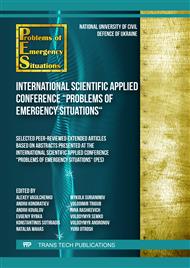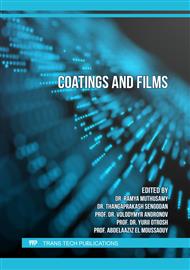p.3
p.13
p.21
p.31
p.41
p.51
p.65
p.75
Methods of Structural Engineering of Surface in Solving the Problems of Multifactorial Increase of the Level of Operational Characteristics of Materials
Abstract:
In the course of the study, several different methods of surface structural engineering are reviewed. The methods described in this paper are characterized by different process physics on the way to obtaining the result, but they are aimed at modifying the structure and properties of the surfaces to which they are applied. Among them, two different technological directions are considered. The first area involves technologies that include a friction component, namely thermofriction treatment (TFT) for thermofriction strengthening (TFS), additional thermofriction strengthening (ATFS) or thermofriction welding (TFW). The second direction is a technology that involves the use of an anode-cathode electrolysis mode in an alkaline-silicate electrolyte – micro-arc oxidation (MAO). The paper describes the features and results of the application of such technologies and the feasibility of using this or that method for materials of different classes, and presents schemes of the corresponding installations. The result of additional hardening of the surface of U8A steel from a microhardness level of 7.2 GPa to 14.7 GPa using the ATFS method after its thermal hardening to almost the maximum possible level is shown. The microstructure of the cross-section of a prehardened specimen of U8A steel after ATFS is presented, where the degree and nature of surface hardening are reliably visible. It is emphasized that in previous studies, consistently effective hardening of steels of various classes has been achieved, even up to the level of 22 GPa in 65G steel. Regarding the method of microarc oxidation, the structure and properties of coatings on low-alloy aluminum alloys AB and AD1 formed in an alkaline-silicate electrolyte in the anode-cathode MAO mode were investigated. It is shown that the method of MAO in alkaline-silicate electrolyte allows to obtain a coating thickness of up to 300 μm, a coating growth rate of ~ 2 μm/min, and a coating hardness of 10-20 GPa. The coatings have high adhesion to the substrate; they have a layered structure. The properties of the coatings are determined by the properties of the base layer. The coatings have a crystalline structure and consist of the following phases: γ-Al2O3, α-Al2O3, mullite (3Al2O3·2SіO2), the ratio between the phases depends on the electrolysis conditions. It has been established that phase formation begins with the γ-Al2O3 phase, which in the process of further coating growth turns into the α-Al2O3 phase or interacts with silicon oxide to form the mullite phase.
Info:
Periodical:
Pages:
3-12
Citation:
Online since:
October 2023
Price:
Сopyright:
© 2023 Trans Tech Publications Ltd. All Rights Reserved
Share:
Citation:



